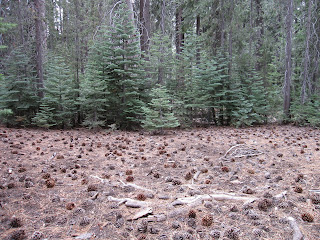Both day hiking and backpacking have their advantages and disadvantages. Both require good weather. A day hike is a twenty-one mile round trip, which requires conditioning, a 10-pound pack, a wag bag for human waste and good luck. Luck with the weather and luck with altitude sickness. If either of these factors turns bad you should stop or risk your life and the lives of your party if you continue. Multiple days with overnight stays requires the conditioning to carry a 35-45 pound pack and gear to limit exposure to weather. Staying overnight allows time to acclimatize, in our case two days. Backpacking also requires you to use bags for lots of things. You sleep in a bag. You may eat from a bag. Lastly (in the Whitney Zone) you are required by law to poop in a bag, which you carry with you the entire trip. Collecting and carrying your human waste may seem extreme, but this area issues permits by lottery to up to 100 day-hikers and 60 overnighters per day in the high season. At the higher elevations there is nothing but granite. As you may imagine, granite is hard to trench and absorbs nothing. Rainwater and snow melt runs off the granite into the lakes used by hikers for drinking water. This should provide a clear enough picture.
You always want what you can’t have! When day hiking, you would love to just stop walking, you can, but then again, if you stop too long too often, it ceases to be a day hike. While backpacking you would love to shed 35 of the 45 pounds and give your feet, knees, shoulders and hips a break. Making and breaking camp each day is time consuming and not something you look forward to in the freezing temperatures found at elevation in the late evening or early morning.
Slow and steady has been the key to our success. The experience has been awesome in either case. A trip up Mt. Whitney is a memory that will never fade. You get tired, you think about stopping, but these are just temporary conditions, all things must pass, and these conditions are no exception. The celebration really takes place after the event, after it is over and you are home and have time to reflect on the entire experience without wondering if you will be successful.
Due to the nature of trip and equipment used to record the locations I will provide a link below. This is the first time I have used this new feature offered by the SPOT group. The pictures are not of the same quality as those that I have previously posted, but time and space are becoming an issue.
http://www.spotadventures.com/trip/view?trip_id=177981




















































